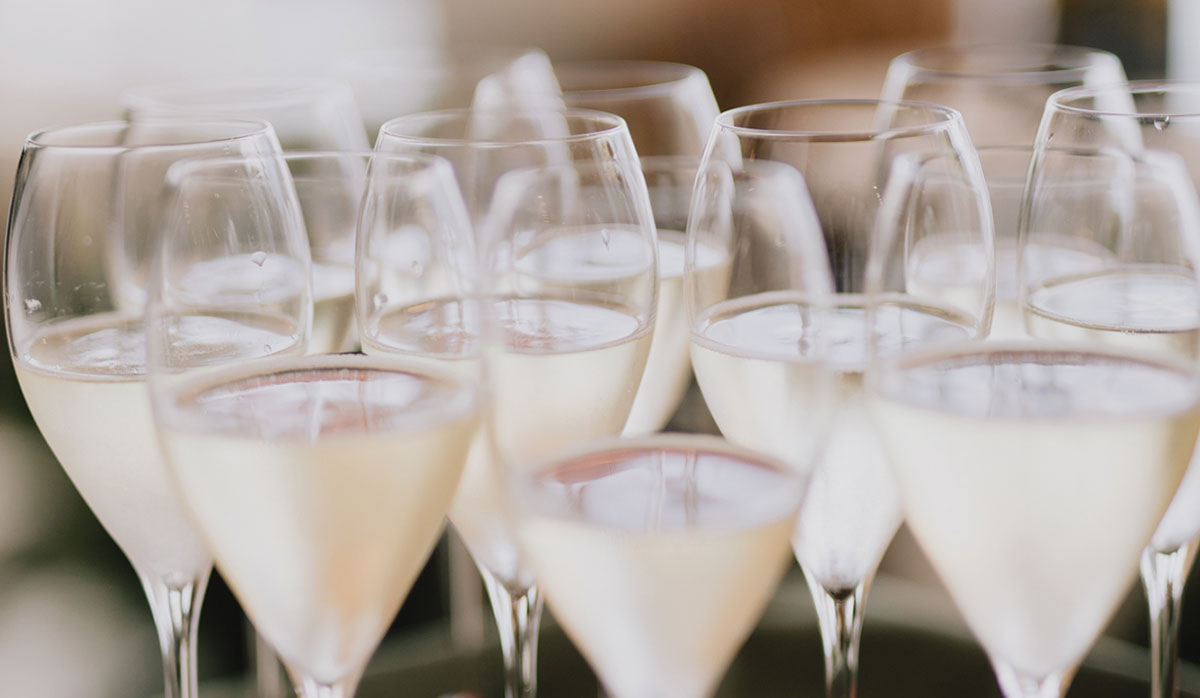Méthode Actors: Vilaura's sparkling success story
Beautiful fizz makes for a classic romantic gesture.
Sparkling wine is no longer tethered to formality and festivities, with consumers increasingly popping the cork for a quiet drink after work or a wine match with a casual dinner.
An IWSR (International Wine & Spirit Research) report notes that stellar growth stats in the United States might be partially down to a “pent-up demand” for celebrations after the lockdowns of Covid-19, but the trend is largely about changing attitudes, “with the drink moving away from exclusive association with formal events and special occasions, to one that can be enjoyed in more relaxed contexts and more frequently”.
Shifting sparkling to an everyday drink poses “a threat and an opportunity” to New Zealand wine, says Richard Lee, the ‘Intel and Insights’ specialist at New Zealand Winegrowers (NZW). A threat because sparkling wine increasingly competes with still wine occasions, including those when Sauvignon Blanc might typically be poured. For example, there’s basket data evidence that Prosecco sales can take some share from Sauvignon Blanc, Richard says. “We are in the ‘share of throat’ business, and for a growing number of occasions, consumers are choosing sparkling wine.”
On the flipside, consumer research conducted by NZW in key markets clearly shows that drinkers of New Zealand Sauvignon Blanc are far more likely than average to also drink sparkling wine, “so there’s opportunity to introduce the legions of Kiwi Sauvignon lovers to quality New Zealand sparkling wines”, Richard says. In the background of the culture shift, Champagne is increasingly expensive, opening up a market space for more affordable, quality sparkling wines, he adds. “So why not from New Zealand? New Zealand has become famous for its Sauvignon Blanc and Italy for its Prosecco, therefore why not create something ‘altogether unique’ in the world of sparkling wine?”
Pernod Ricard is certainly tapping into the potential, with its sparkling production in Marlborough almost doubling during the past five years, and some Sauvignon Blanc blocks being redeveloped for Marlborough Mumm. “From our perspective, the future is bright,” says New Zealand Operations Manager Tony Robb.
“Marlborough méthode traditionnelle represents a very profitable alternative to Sauvignon Blanc.” Mumm Marlborough was launched in 2020 and in spring this year Pernod Ricard launched Mumm Central Otago Blanc de Noir in New Zealand and Australia.
Central Otago Viticulturist Timbo Deaker, of Viticultura, says 8% of the region’s Pinot Noir crop is currently directed to bubble base, “and we expect that could double in the next couple of years”. The growth in sparkling is proving an economic boon, especially in some of the “fringe” areas of the region, he says. “It is also helping our company manage the harvest a lot better, by spreading out our workload over an eight-week period, versus a six-week period with still wine production.”
IWSR reported a 30% rise in people drinking sparkling wine in the US between 2019 and 2022. More people were drinking the style, and drinking it more frequently, with the number of monthly sparkling wine drinkers rising from 56% three years ago to 72% in 2022. There is a big shift in the number of drinkers that view sparkling wine as a “relaxing drink at the end of the day”, the report says. “Almost a quarter of respondents reported drinking sparkling wine at least twice a week.”
Sparkling wine is the only wine segment in the US to have experienced a large growth in volumes sold between 2016 and 2021, and the market is projected to grow by more than 15% in volume terms, between 2021 to 2026.
 |
|---|
|
Mumm Central Otago |
Despite sparkling wine’s stellar performance in the US, Australia has been the star performer for New Zealand sparkling wine exports over the past decade. Richard says export volumes were “flattish” until 2021, when “significant growth” began, mainly driven by Australia, but also in the US off a smaller base.
Haydn Jones, Wine Category Manager at Countdown, says it’s been a tough year for sparkling wine through grocery in New Zealand, with the second largest decline in volume during the past year. Sparkling wine is priced at a premium relative to still wine, and the decline is set against a backdrop of inflation putting pressure on consumer discretionary spend, Haydn says. “This has been most notable with Champagne sales, which could afford New Zealand-produced sparkling an opportunity to capture attention, given the strong quality/value offering.” He adds New Zealand producers only need to look at the continued success of Prosecco, “notably presentation on shelf”, for inspiration. “Sparkling wine has a great ability to introduce new and younger consumers to the world of wine with its approachable style. Given the long-term trends for wine consumption and challenge from other beverage categories, this is worth championing.”
The large 2025 harvest will exacerbate the wine industry's "lingering" supply from recent vintages, New Zealand Winegrowers Chief Executive Philip…
If you find a new consumer in a developed wine market, you are taking them from someone else, says Blank…
OPINION: Sauvignon Blanc was famously introduced to New Zealand by Ross Spence of Matua Valley, and then serendipitously planted in…